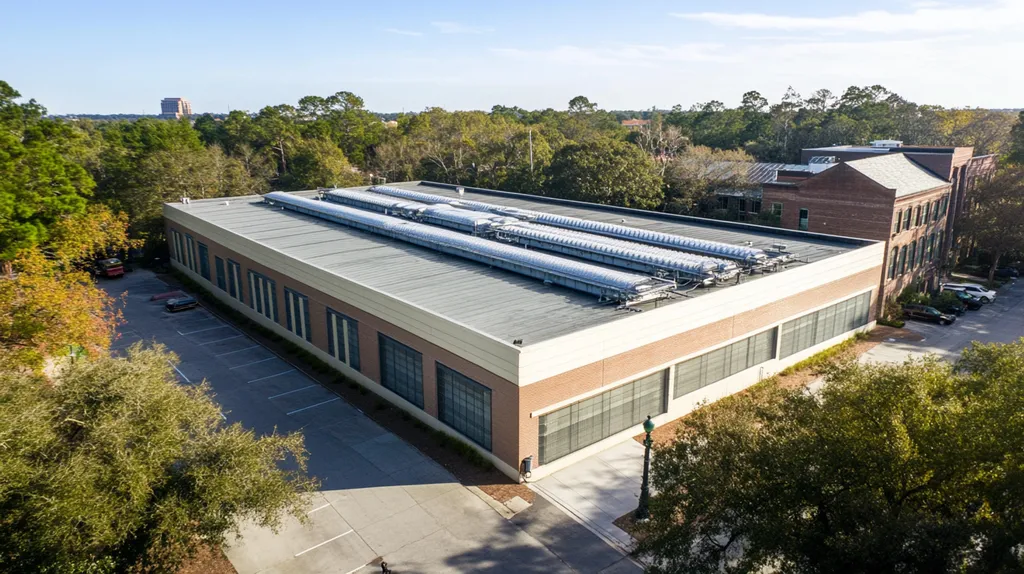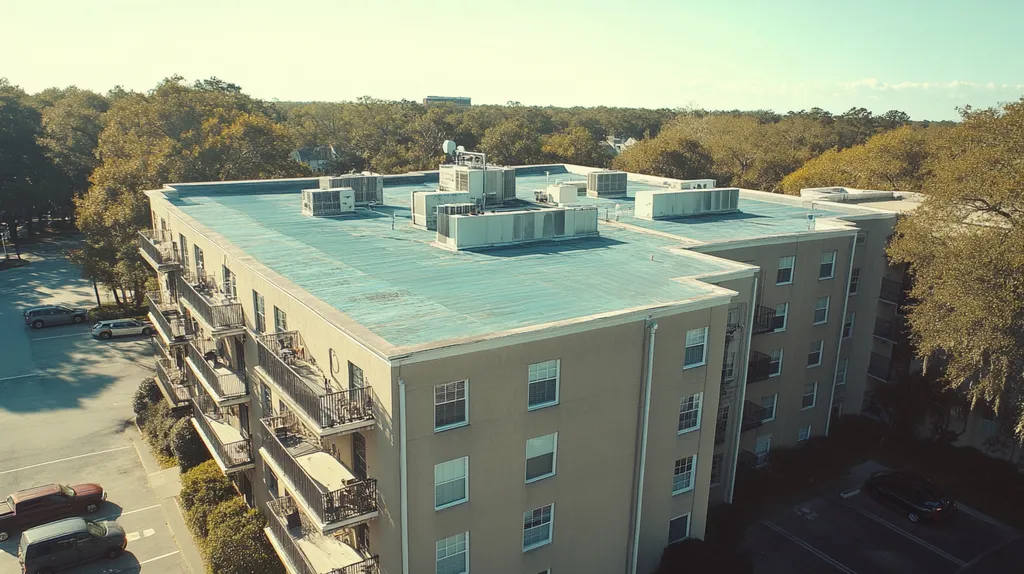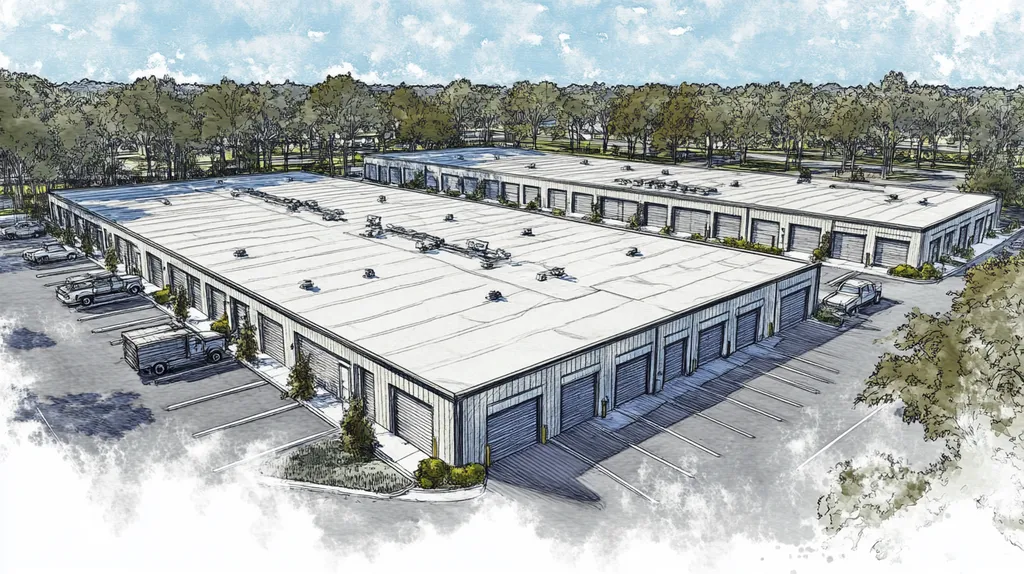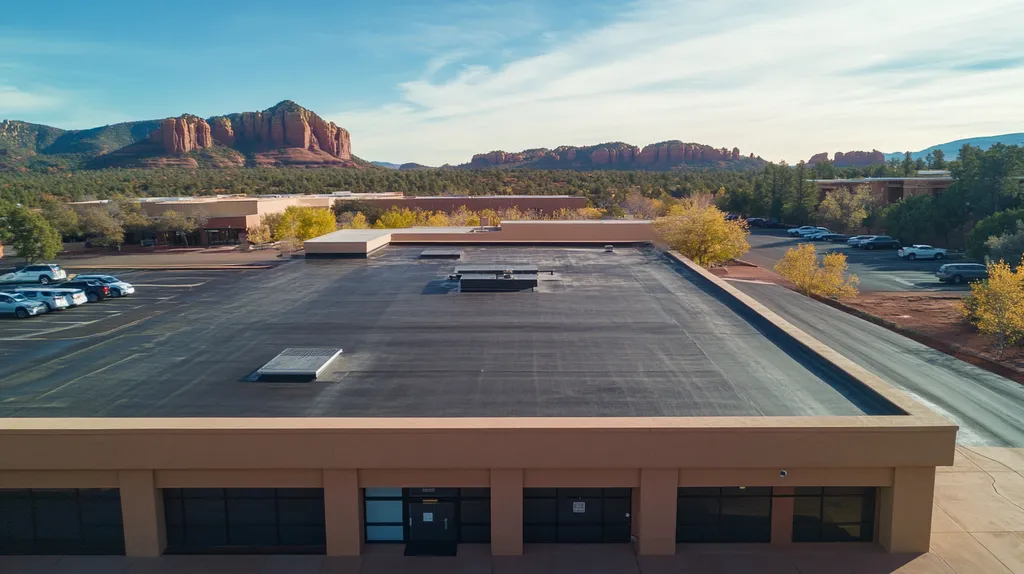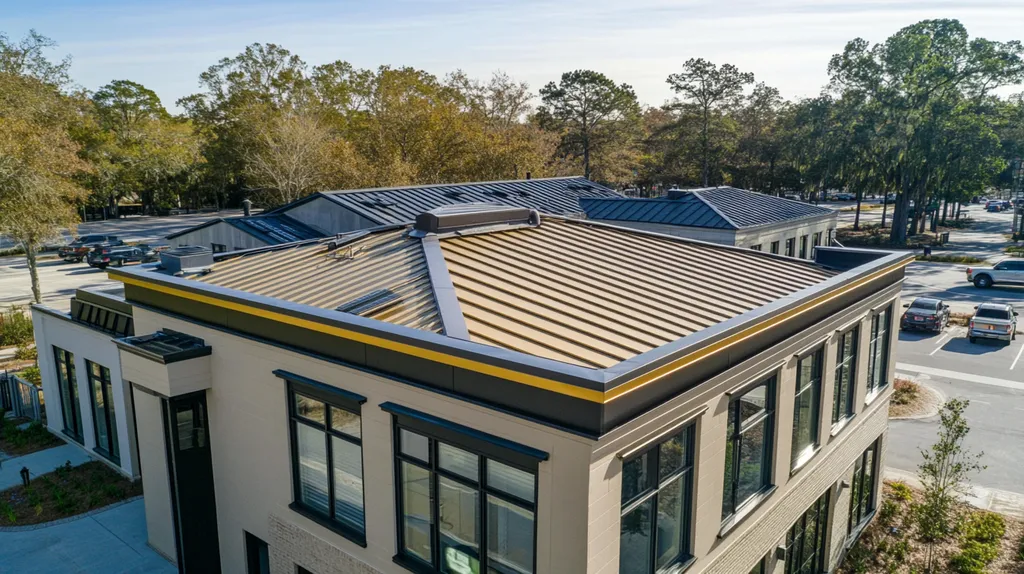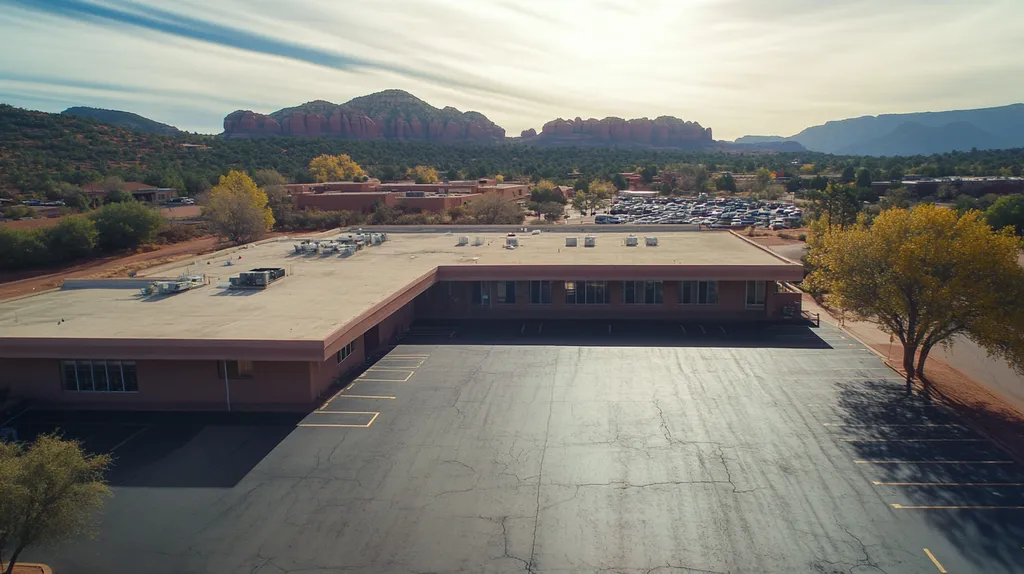Welcome to today’s Battle Royale featuring two roofing heavyweights: “Reflective Roof Coatings” in the east corner versus “Energy-Efficient Roof Membranes” in the west!
Tonight’s showdown pits these contenders against each other across six punishing rounds designed to test every aspect of their performance for Utility Rebates for Commercial Roofs.
At stake? Millions in potential costs, decades of building protection, and the critical performance demands of modern commercial and industrial facilities.
Our professional judging panel will evaluate each round on technical merit, real-world performance, and value delivery. After all six rounds, we’ll declare our ultimate champion.
Ladies and gentlemen, facility managers and building owners… it’s time to rumble!
ROUND 1: INITIAL COSTS & INSTALLATION
When evaluating commercial roofing solutions, the initial investment and installation process can make or break a project’s success. With utility costs representing up to 30% of a building’s operating expenses, choosing between reflective coatings and energy-efficient membranes demands careful consideration of upfront costs, installation requirements, and project timing.
Material Expenses
Reflective roof coatings offer significant cost advantages in material expenses, particularly when applied to existing roofing systems. These coatings can reduce cooling demand by 10-15% while requiring minimal raw materials. (source: SRP)
Energy-efficient roof membranes typically command premium prices due to their advanced materials and manufacturing processes. While these materials offer excellent durability, their higher cost point can strain initial project budgets.
For material expenses, reflective roof coatings present a clear “ADVANTAGE” due to their lower upfront costs and potential for direct application.
Installation Complexity
Reflective coating installations generally follow a straightforward process of surface preparation and application. This simplicity allows for faster completion and reduces the risk of installation errors.
Energy-efficient membranes require more complex installation procedures, including careful seam welding and detailed edge work. These technical demands often necessitate specialized crews and equipment.
The simpler installation requirements give reflective coatings an “ADVANTAGE” in this category.
Project Timeline
Reflective coating projects typically complete within 2-3 days for average commercial roofs. This rapid timeline minimizes business disruption and allows for quick return to normal operations.
Energy-efficient membrane installations usually require 5-7 days minimum, depending on roof size and complexity. This extended timeline can impact business operations and increase indirect costs.
The significant difference in completion time gives reflective coatings another clear “ADVANTAGE” for project timeline considerations.
ROUND 1 WINNER: Reflective Roof Coatings
ROUND 2: DURABILITY & LIFESPAN
In the high-stakes world of commercial roofing, durability and lifespan directly impact both short-term operations and long-term property value. With replacement costs ranging from $10-30 per square foot, choosing between reflective coatings and energy-efficient membranes becomes a critical financial decision.
Weather extremes, UV exposure, and thermal cycling constantly challenge roofing systems. Understanding how each solution performs under these stresses is essential for making informed investment choices.
Weather Resistance
Reflective coatings create a seamless protective layer that flexes with thermal movement. This elasticity helps prevent cracking and splitting during extreme temperature changes.
The coating’s reflective properties reduce surface temperatures by up to 80°F, significantly decreasing thermal stress on the underlying roof structure. This temperature reduction helps extend the life of existing roofing materials by minimizing expansion and contraction cycles.
Energy-efficient membranes rely on mechanical fastening or adhesive bonding at seams and transitions. While generally durable, these connection points can become vulnerable to weathering and movement over time.
These membranes maintain dimensional stability across temperature ranges but may experience more stress at joints and penetrations compared to seamless coatings.
ADVANTAGE: Reflective Coatings
UV and Chemical Resistance
Reflective coatings are specifically engineered to combat UV degradation. Their highly reflective surface bounces harmful rays away from the roof structure while maintaining chemical stability.
Quality coatings resist environmental pollutants and maintain their protective properties even with prolonged chemical exposure. Regular maintenance can help preserve these protective qualities indefinitely.
Energy-efficient membranes incorporate UV inhibitors throughout their material composition. This provides good initial protection, but effectiveness may decrease over time as the surface layer degrades.
While resistant to many chemicals, some membrane materials can be vulnerable to specific industrial pollutants or cleaning agents. Proper material selection based on environmental conditions becomes crucial.
ADVANTAGE: Reflective Coatings
Life-Cycle Performance
Reflective coatings can be reapplied multiple times without removing existing layers. This allows for indefinite life extension through proper maintenance and periodic recoating.
The ability to renew protection without complete replacement provides significant long-term cost advantages. Simple repairs can address isolated damage without compromising the entire system.
Energy-efficient membranes typically require complete removal and replacement at the end of their service life. While this provides a fresh start, it involves higher costs and more extensive disruption.
The one-piece nature of membrane systems means localized damage often requires larger repair areas compared to coatings. This can increase maintenance costs over the system’s lifespan.
ADVANTAGE: Reflective Coatings
ROUND 2 WINNER: Reflective Coatings
ROUND 3: PERFORMANCE FACTORS
In today’s competitive commercial real estate market, roof performance can make or break operational budgets. With energy costs continuing to rise and sustainability becoming a key priority, choosing between reflective coatings and energy-efficient membranes has major financial implications.
Many utility companies now offer substantial rebates for cool roofing upgrades, covering up to 75% of project costs in some cases. This dramatic increase in available incentives – from $1.6 billion in 2006 to $6.3 billion in 2015 – has transformed the economics of commercial roof choices. (source: Duro-Last)
Energy Efficiency
Energy efficiency directly impacts both operating costs and available utility incentives. Understanding real-world performance is crucial for maximizing return on investment.
Reflective coatings create a highly efficient thermal barrier, reducing roof surface temperatures by up to 80°F during peak summer conditions. This dramatic temperature reduction translates to 10-15% lower cooling costs in most commercial buildings.
Energy-efficient membranes rely on multiple material layers to achieve insulation values. While effective at reducing heat transfer, they typically cannot match the direct temperature reductions of reflective surfaces.
The superior cooling performance and energy savings give reflective coatings a clear “ADVANTAGE” in this category.
Weather Resistance
Commercial roofs must withstand extreme temperature swings, UV exposure, and precipitation while maintaining their performance properties. Long-term durability directly affects maintenance costs and system longevity.
Reflective coatings form a seamless protective layer that flexes with thermal movement. This elasticity prevents cracking and splitting during temperature changes while maintaining reflective properties.
Energy-efficient membranes use mechanical or adhesive seams that can become stress points over time. While generally durable, these connection areas require more monitoring and maintenance.
The seamless protection and flexibility of reflective coatings earns them an “ADVANTAGE” for weather resistance.
Lifecycle Performance
Understanding how roofing solutions perform over their complete service life is essential for accurate cost comparisons. This includes initial effectiveness, degradation rates, and renewal requirements.
Reflective coatings can be reapplied multiple times without removing existing layers. This allows for indefinite life extension through proper maintenance and periodic recoating.
Energy-efficient membranes typically require complete replacement at the end of their service life. While providing a fresh start, this involves higher costs and more extensive disruption.
The ability to restore performance through simple recoating gives reflective coatings another “ADVANTAGE” in lifecycle considerations.
ROUND 3 WINNER: REFLECTIVE ROOF COATINGS
ROUND 4: MAINTENANCE REQUIREMENTS
Commercial roof maintenance can represent up to 25% of a building’s total operating costs over its lifespan. With increasing pressure on facility budgets, choosing between reflective coatings and energy-efficient membranes has major implications for long-term maintenance expenses and resource allocation.
Understanding the maintenance requirements, costs, and performance stability of each option becomes crucial as utility companies offer increasingly generous rebates for energy-efficient roofing solutions.
Maintenance Complexity
Reflective coatings typically require simple maintenance routines focused on periodic cleaning and visual inspections. Their seamless application means fewer vulnerable points that need regular attention.
Basic pressure washing and spot repairs can usually be handled by in-house maintenance teams. Annual inspections help identify any areas needing recoating before serious degradation occurs.
Energy-efficient membranes demand more sophisticated maintenance protocols due to their multiple layers and seamed construction. Regular inspection of seams, flashings, and penetrations requires specialized expertise.
Membrane repairs often necessitate professional contractors with specific material knowledge and equipment. This increased complexity adds both cost and scheduling challenges to routine maintenance.
ADVANTAGE: Reflective Coatings
Cost of Maintenance
Reflective coating maintenance costs typically range from $0.10 to $0.25 per square foot annually. These costs remain relatively stable since most maintenance involves simple cleaning and occasional touch-ups.
The ability to recoat damaged areas without complete removal helps minimize long-term expenses. Proper maintenance can extend coating life indefinitely through periodic renewal.
Energy-efficient membrane maintenance averages $0.30 to $0.50 per square foot yearly. These higher costs stem from more complex repair requirements and the need for specialized contractors.
Membrane repairs often involve larger areas than the actual damage due to seaming requirements. This scope creep can significantly impact maintenance budgets over time.
ADVANTAGE: Reflective Coatings
Longevity and Performance Stability
Reflective coatings maintain their performance characteristics through simple maintenance and periodic recoating. Their reflective properties typically degrade by only 2-3% annually with proper care.
The ability to recoat without removing existing layers allows for continuous performance optimization. This flexibility helps maintain optimal energy efficiency and utility rebate eligibility.
Energy-efficient membranes can experience more dramatic performance declines, especially around seams and penetrations. Even minor damage can compromise system integrity and energy efficiency.
The fixed lifespan of membrane systems means eventual complete replacement, regardless of maintenance quality. This limitation affects long-term performance stability and investment planning.
ADVANTAGE: Reflective Coatings
ROUND 4 WINNER: Reflective Roof Coatings
ROUND 5: SUSTAINABILITY CREDENTIALS
With commercial buildings consuming nearly 40% of total U.S. energy use, roofing choices dramatically impact both environmental footprint and operational costs. The stakes are particularly high as utility companies expand their sustainability incentives, offering increasingly generous rebates for energy-efficient roofing solutions.
Understanding how reflective coatings and energy-efficient membranes contribute to sustainability goals has become essential for property owners seeking to maximize both environmental impact and financial returns.
Environmental Impact
The environmental footprint of commercial roofing extends far beyond initial material choices. Surface temperatures, urban heat island effects, and long-term energy consumption all play crucial roles in determining true environmental impact.
Reflective coatings create an immediate reduction in roof surface temperatures by up to 50 degrees Fahrenheit, dramatically decreasing cooling demands and associated carbon emissions. This direct temperature control helps combat urban heat island effects while reducing strain on local power grids.
Energy-efficient membranes rely primarily on insulation properties rather than reflectivity. While effective at reducing heat transfer, they typically cannot match the immediate temperature reductions and corresponding environmental benefits of reflective surfaces.
ADVANTAGE: Reflective Coatings
Long-Term Performance
Sustainable roofing solutions must maintain their environmental benefits throughout their service life. Performance degradation and maintenance requirements directly impact long-term environmental value.
Reflective coatings can be renewed through simple reapplication, maintaining optimal performance indefinitely. This ability to restore effectiveness without complete replacement minimizes waste and preserves embodied energy.
Energy-efficient membranes typically require complete replacement at the end of their service life. While providing consistent performance during their lifespan, this eventual replacement generates significant material waste.
ADVANTAGE: Reflective Coatings
Utility Incentives
Utility companies increasingly recognize the grid-wide benefits of sustainable roofing. Business Energy Rebates now offer significant incentives for installations that reduce peak energy demand.
Reflective coatings qualify for substantial utility rebates, with programs offering up to 12 cents per square foot for existing buildings and 4 cents for new construction. These installations typically reduce total energy consumption by 9%, providing immediate environmental and financial returns. (source: OUC Blog)
Energy-efficient membranes may qualify for certain rebates based on insulation values. However, these incentives often prove less substantial than those available for reflective solutions.
ADVANTAGE: Reflective Coatings
ROUND 5 WINNER: Reflective Roof Coatings
ROUND 6: SPECIALIZED APPLICATIONS
In today’s complex commercial building environment, specialized roofing applications can make or break energy performance and utility incentive eligibility. With cooling costs representing up to 40% of commercial building energy use, choosing the right specialized solution has major financial implications.
Building owners face increasing pressure to optimize roofing systems for specific use cases while maximizing utility rebate potential. Understanding how each option performs in specialized scenarios becomes crucial for making informed investment decisions.
Application Versatility
Reflective coatings excel in retrofitting existing roofs, offering seamless coverage that conforms to irregular surfaces. Their fluid-applied nature allows these coatings to effectively seal and protect complex rooftop equipment installations and penetrations.
The coatings can be applied to most common roofing substrates, including modified bitumen, single-ply membranes, and metal roofing. This versatility makes them ideal for upgrading aging roofs without full replacement.
Energy-efficient membranes require more specific installation conditions and may not be suitable for all existing roof structures. Their rigid format can make complex equipment areas and irregular surfaces more challenging to detail properly.
While offering excellent performance in new construction, membranes have limited retrofit applications due to weight considerations and installation requirements.
ADVANTAGE: Reflective Coatings
Performance Requirements
Reflective coatings create highly efficient thermal barriers that reduce roof surface temperatures by up to 80°F during peak conditions. Using highly reflective paint, these coatings can reduce cooling demand by 10-15% while improving building comfort. (source: SRP)
The coatings maintain flexibility across temperature extremes, allowing them to accommodate building movement without compromising performance. This elasticity proves especially valuable in facilities with significant thermal cycling.
Energy-efficient membranes deliver consistent insulation values but may struggle to match the direct temperature reductions of reflective surfaces. Their rigid structure can face challenges in buildings with extensive movement or vibration.
While providing good general performance, membranes often require additional treatments to achieve comparable cooling benefits in specialized high-heat applications.
ADVANTAGE: Reflective Coatings
Application Conditions
Reflective coatings offer significant application flexibility, with many products designed for installation in varied weather conditions. Their quick curing times minimize exposure risks during installation.
The coatings can often be applied at temperatures ranging from 50-120°F, providing broad installation windows. This flexibility helps maintain project schedules while ensuring proper cure.
Energy-efficient membranes typically require more specific installation conditions, including temperature and humidity controls. Their seaming requirements demand precise environmental conditions for proper bond development.
Weather limitations and cure time requirements can significantly impact membrane installation schedules, particularly in challenging climates or time-sensitive projects.
ADVANTAGE: Reflective Coatings
ROUND 6 WINNER: Reflective Roof Coatings
AND THE WINNER IS…
Ladies and gentlemen, after six punishing rounds of technical evaluation, we have our undisputed champion! With a stunning clean sweep across all categories, REFLECTIVE ROOF COATINGS emerges as the decisive victor in this utility rebate showdown!
The champion dominated with a combination of lower initial costs, superior weather resistance, and unmatched energy efficiency performance. Its ability to deliver immediate cooling benefits while qualifying for maximum utility incentives proved an unstoppable combination.
But don’t count Energy-Efficient Membranes out completely! In new construction applications where building codes mandate specific R-values, these systems can still deliver knockout performance.
In the high-stakes arena of commercial roofing, there’s no substitute for making informed decisions backed by expert guidance. The utility rebate championship belt awaits those who carefully match their building’s specific requirements with the right roofing contender’s strengths.
Now, let’s hear it for our new champion – REFLECTIVE ROOF COATINGS!
FREQUENTLY ASKED QUESTIONS
Q. What are the initial costs of commercial roof coatings?
A. Initial costs for reflective roof coatings are generally lower than energy-efficient membranes. These coatings can often be applied directly to existing roofs, saving on materials and labor. With simpler installation processes, reflective coatings can also minimize project disruption and expedite your return to normal business operations.
Q. How durable are industrial roofs with reflective coatings?
A. Reflective coatings provide excellent durability by flexibly responding to temperature changes, reducing cracking. Their seamless layer protects against extreme weather and maintains low surface temperatures. This insulation ensures a longer lifespan, minimizing the need for frequent repairs or replacements.
Q. Are utility rebates available for commercial roof options?
A. Yes, many utility companies provide rebates for reflective coatings, sometimes covering up to 75% of project costs. These incentives encourage energy-efficient solutions that reduce cooling demands and greenhouse gas emissions, promoting sustainability goals for commercial property owners.
Q. How does maintenance differ for energy-efficient roof membranes?
A. Unlike reflective coatings that need basic inspections and cleaning, energy-efficient membranes require specialized upkeep. These membranes have seams and transitions that can be vulnerable, demanding consistent professional assessment and repair, often resulting in higher maintenance costs over time.
Q. What environmental benefits come from reflective roof coatings?
A. Reflective coatings significantly reduce roof temperatures, combating urban heat island effects and lowering energy consumption. By reflecting sunlight, they decrease cooling needs, which leads to reduced carbon emissions and contributes positively to overall environmental sustainability efforts.
Q. Can both roofing options be applied to existing structures?
A. Yes, reflective coatings are particularly versatile, adapting to various existing roofing surfaces without needing replacement. Energy-efficient membranes are also applicable but may require specific conditions and treatments that complicate installation on older structures.
Q. How do reflective coatings impact long-term commercial roof performance?
A. Reflective coatings enhance long-term performance by allowing multiple reapplications without full removal. This renews energy efficiency and maintains protective properties, proving beneficial for cost savings and long-term viability in managing commercial roofing systems.

